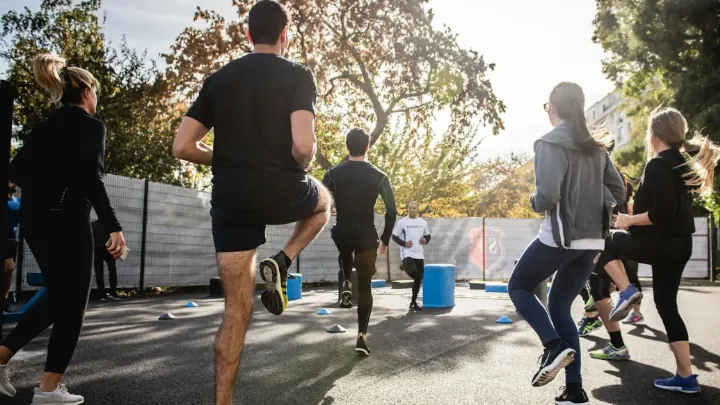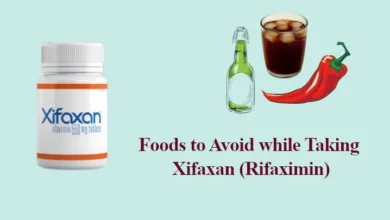Unlocking the Health Benefits of Physical Activity: Understanding Calorie Burning

In today’s fast-paced world, where sedentary lifestyles have become the norm, the importance of physical activity cannot be overstated.
Regular exercise is a cornerstone of good health, helping to prevent chronic diseases, improve mental health, and enhance the quality of life. Beyond these broad benefits, one of the key objectives of engaging in physical activity is understanding and optimizing calorie burning.
Calories are the units of energy our bodies use to perform every activity, from breathing to vigorous exercise.
By grasping how physical activity impacts calorie expenditure, individuals can tailor their exercise routines to achieve specific health and fitness goals, such as weight loss, muscle building, or improved endurance.
The Science of Calorie Burning
What are Calories and How are They Burned?
Calories are a measure of energy. In the context of nutrition and exercise, they represent the energy that is consumed through food and drink and expended through bodily functions and physical activity.
When we exercise, our bodies burn calories to fuel the activity. The more intense and prolonged the exercise, the more calories are burned. This process is essential for weight management and overall health.
The Role of Metabolism in Calorie Burning
Metabolism plays a central role in calorie burning. It encompasses all the biochemical processes that occur within our bodies, including those that break down nutrients from our food to produce energy.
The rate of metabolism varies from person to person and is influenced by several factors, including genetics, age, and muscle mass. A higher metabolic rate means that a person burns more calories at rest and during activity, which can contribute to easier weight management.
Factors Affecting Calorie Burn
Several key factors influence how many calories someone burns during exercise:
- Weight: Heavier individuals expend more energy doing the same activity as lighter individuals because more mass requires more energy to move.
- Intensity of Activity: Higher intensity activities burn more calories in a shorter amount of time compared to lower intensity activities.
- Age: Metabolic rate generally slows as people age, reducing calorie burn.
- Sex: Men often have a higher percentage of muscle mass compared to women, leading to a slightly higher calorie expenditure.
- Muscle Mass: Muscle tissue burns more calories at rest compared to fat tissue.
Understanding these factors can help individuals optimize their physical activities for maximum calorie burning, which is essential for achieving various health and fitness objectives.
Photo by Anupam Mahapatra on Unsplash
Health Benefits of Regular Physical Activity
Engaging in regular physical activity is widely recognized for its extensive range of health benefits, spanning physical, mental, and emotional well-being.
Physically, exercise helps strengthen the heart, muscles, and bones, reducing the risk of chronic diseases such as heart disease, diabetes, and osteoporosis.
It also plays a critical role in weight management by burning calories, which can prevent obesity and aid in weight loss or maintenance efforts.
Beyond the physical advantages, regular physical activity significantly impacts mental and emotional health.
Exercise releases endorphins, often referred to as the body’s natural mood lifters, which can reduce feelings of depression and anxiety. Regular activity also promotes better sleep, improves self-esteem, and provides a sense of accomplishment.
Specific Benefits Related to Calorie Burning
Calorie burning through exercise is not just about weight management. It’s also crucial for improving cardiovascular health by increasing heart rate and enhancing the efficiency of the heart and lungs.
This increased efficiency can lead to lower blood pressure and improved circulation. Additionally, burning calories through exercise helps regulate blood sugar levels, reducing the risk of type 2 diabetes.
Photo by Bruno Nascimento on Unsplash
Golf as an Exercise
Introduction to Golf as a Form of Physical Activity
Golf is often overlooked as a form of exercise, with many not recognizing the physical activity involved in playing a round.
However, golf can be an excellent way to enjoy moderate physical activity. Walking the course, carrying clubs, and swinging all contribute to calorie expenditure.
Calorie Burning Potential of Playing Golf
Playing a round of golf can burn a significant number of calories. For example, walking an 18-hole golf course can burn approximately 800 to 1,400 calories, depending on factors like body weight, walking speed, and carrying versus using a cart.
These figures highlight golf’s potential as a beneficial form of physical exercise, particularly for those seeking enjoyable, low-impact activities.
Other Health Benefits of Golfing
Beyond calorie burning, golf offers several other health benefits. It promotes cardiovascular health through walking, swinging, and carrying the golf bag.
Photo by Mick Haupt on Unsplash
Golfing also has mental health benefits, as it requires concentration and strategy, which can help keep the mind sharp and improve focus.
The social aspect of golf, whether playing with friends or joining a league, can improve emotional well-being by fostering social connections and reducing feelings of isolation.
The outdoor environment of most golf courses provides added benefits, including vitamin D exposure from sunlight, which is essential for bone health and immune function.
Golf, with its unique blend of physical activity, mental challenges, and social interaction, offers a comprehensive package of health benefits that can appeal to a wide range of individuals, making it a valuable addition to any fitness regimen.
Comparative Analysis of Calorie Burning in Different Physical Activities
When it comes to burning calories, not all exercises are created equal. Activities vary widely in their calorie-burning potential, influenced by intensity, duration, and the individual’s body weight. For context, let’s compare golf to other common exercises:
- Walking: A leisurely walk burns around 200-300 calories per hour, making it a low-intensity option suitable for almost everyone.
- Running: Depending on speed and intensity, running can burn between 600 to 1,000 calories per hour, offering a high-intensity workout.
- Cycling: Moderate cycling can use up approximately 400-600 calories per hour, with higher intensities significantly increasing calorie expenditure.
Photo by Coen van de Broek on Unsplash
Comparing these figures with golf, where walking an 18-hole course burns between 800 to 1,400 calories, shows that golf can be comparable to more vigorous exercises, especially if players choose to walk the course rather than using a cart.
Statistics from this year and last year indicate a growing trend in people seeking diverse and enjoyable ways to exercise, with golf witnessing a resurgence in popularity.
This resurgence is partly due to its perceived lower intensity, which appeals to a wide demographic, and the social and mental health benefits it offers.
Practical Tips for Incorporating More Physical Activity into Daily Life
Getting Started with Regular Exercise
- Set Realistic Goals: Start with attainable goals that motivate you without being overwhelming. Gradually increase the intensity and duration of your activities.
- Choose Activities You Enjoy: Exercise doesn’t have to be a chore. Whether it’s golf, cycling, swimming, or dancing, engaging in activities you enjoy can make exercise more appealing.
Making Physical Activity Enjoyable and Sustainable
- Mix It Up: Avoid routine fatigue by varying your activities. Combining golf with other forms of exercise can keep your routine exciting and cover different aspects of fitness.
- Find a Partner: Exercising with a friend or family member can increase your motivation and make physical activity a social event.
- Set a Schedule: Consistency is key. Schedule your exercise like any other important activity. This helps in making it a non-negotiable part of your day.
Incorporating Golf and Other Exercises into a Weekly Routine
- Dedicate specific days to golf, ensuring you walk the course to maximize calorie burn.
- On non-golf days, consider other exercises that complement the benefits of golf, such as strength training to improve your swing or yoga to enhance flexibility and balance.
- Use technology to your advantage. Fitness trackers can motivate you to increase daily steps or active minutes, and many offer specific tracking for activities like golf.
Photo by Brandon Williams on Unsplash
By integrating a variety of exercises into your weekly routine, including golf, you can enjoy a holistic approach to fitness that benefits your body, mind, and social well-being. This balanced approach ensures that physical activity remains a permanent and enjoyable part of your lifestyle.
Understanding the calorie-burning potential of various physical activities, including golf, is key to tailoring a fitness routine that meets individual health and wellness goals.
By comparing different exercises and incorporating practical tips for a more active lifestyle, individuals can find enjoyable and sustainable ways to improve their physical, mental, and emotional well-being.
Embracing a variety of activities, from the serene greens of the golf course to the dynamic movements of running and cycling, offers a holistic approach to health that enriches life in countless ways.





